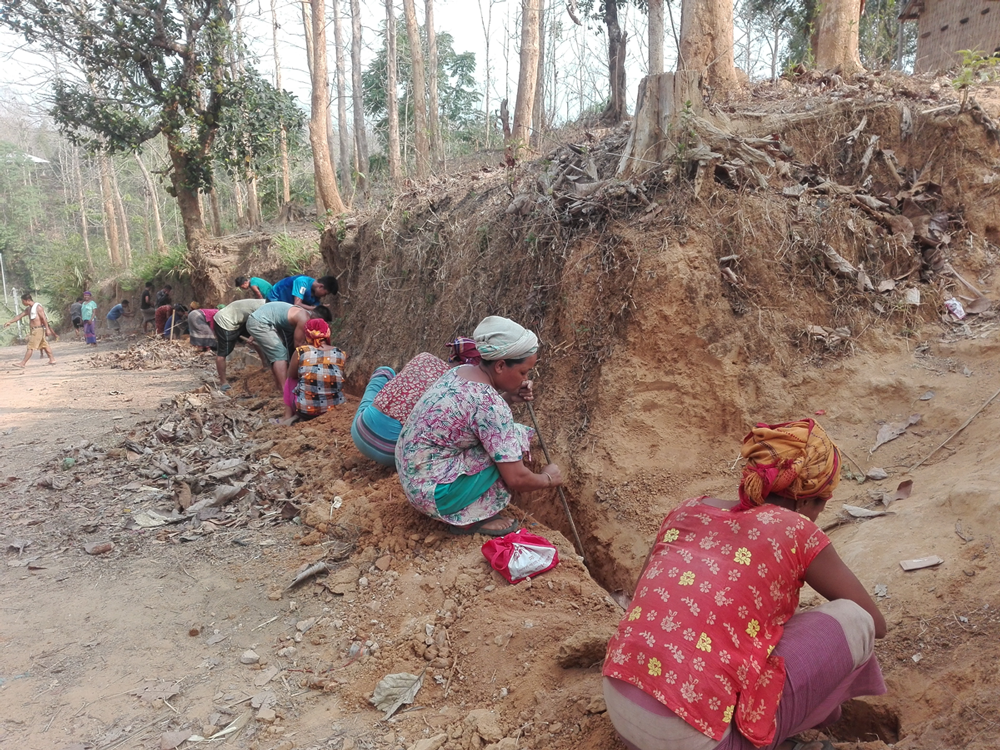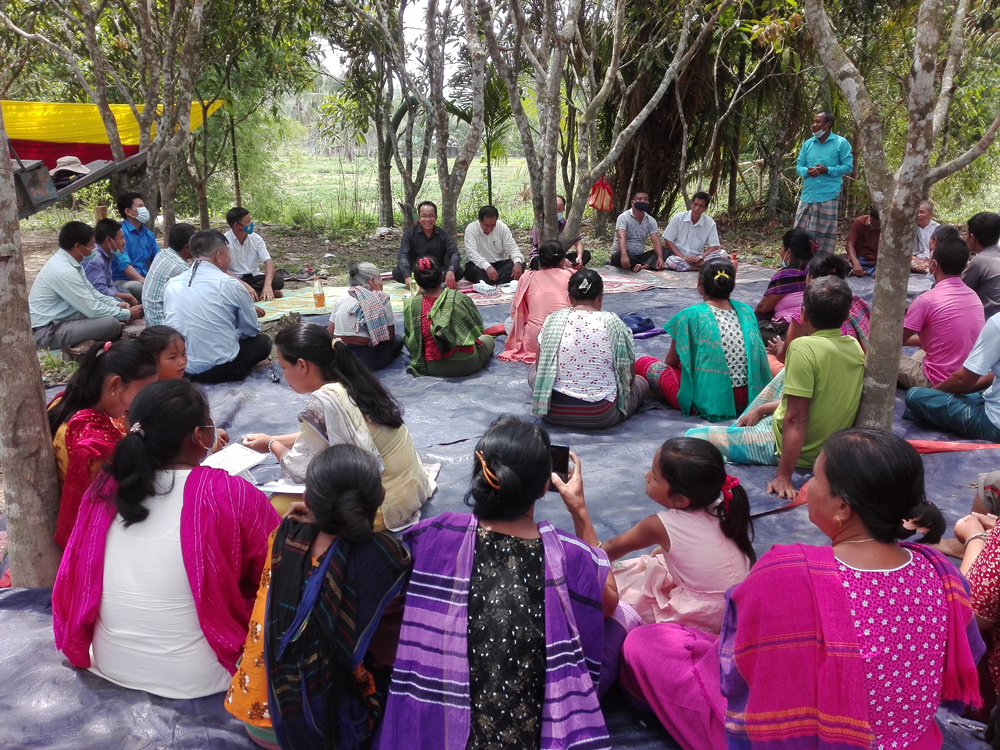Better Together: Solar Solutions in Bangladesh to Battle Water and Food Shortages
The Inclusive Leadership winners of the GCA Local Adaptation Champions Awards support the vulnerable in Bangladesh to battle drought, landslides and floods with their community-led solar water pump.
T
he water crisis in the Chittagong Hill Tracts of Bangladesh is relentless. Over the last decade, drought in Jurachhari Upazila of Rangamati Hill District has become acute, leading to food and water shortages among indigenous communities dependent on agriculture, with severe consequences – especially for women, who are responsible for collecting water.
In 2017, a devastating landslide destroyed many water sources and cultivable land, worsening the situation with regards to safe drinking water and food security. “I visited the remote area and found a scarcity of pure drinking water,” said Arunendu Tripura, Public Relations Officer for Rangamati Hill District Council.
“Some members of the community were getting sick, because of the lack of safe drinking water. Girls used to walk for half an hour up and down the hill to collect water, and communities could not cultivate or irrigate their land or fruit orchards. Women spent a lot of their time collecting water, instead of other income generating activities.”
From crisis response to long-lasting plan
Supported by Strengthening Inclusive Development in Chittagong Hills Tracts – a project funded by Denmark’s Development cooperation DANIDA – and the United Nations Development Programme (UNDP), the Rangamati Hill District Council’s climate resilience project worked with communities to assess their own vulnerability to climate change, and then prepare a local resilience plan.
The communities received funds directly from the Hill District Councils to implement their plan, along with training in financial management. With drinking water as a key priority, the women decided to install a solar powered tube well. The tube well, powered by twelve solar panels, pumps up groundwater which is stored in a 5,000-liter master tank, for distribution to the community.

UNDP Programme Officer Mr. Azad Rahman said: “We prioritize locally led adaptation in our projects. This ensures that communites are able to plan and implement their own adaptation program. It also ensures capacity-building for the local communities and sustainability of their initiatives.”
“Half of our members are women,” Tripura explained. “I asked them why they chose to install this water facility, and they said as soon as they were able to decide on a solution, they chose to end the misery they face in fetching water, and to curb their suffering. The idea showed us that development at the grassroots level would be chosen by the community through empowering them. Now communities have clean drinking water, and they can water their fruit, mango, and lychee orchards, and cultivate their land for food and income.”
Hygiene was also high on their list: “This has made our life easier,” said Mayhla Ching Khayang, one of the women participating in the project. “Water is available, and we can bathe easily. Overall, life is better.”

Women and indigenous communities lead the way
Community members have a say on how funds are allocated, and the funds are then managed by local climate resilience committees. There is a transparency mechanism in place, with social auditing carried out every six months. With mandatory women’s leadership, the community ultimately has the full freedom to choose their project and actions, and women took the overall lead for project design, implementation, and follow-up.
“The community was able to take their own decision,” said Tripura. “They know the solutions better than we in a city do. They know their problems and when local people are empowered to make decisions at the local level, solutions will be more sustainable in the long-term.”
Professor Patrick Verkooijen, Chief Executive Officer of the Global Center on Adaptation, said: “The hands-on approach which includes community vulnerability assessment ensures that the community’s needs, resources and capacities are front and center.”
Jury member Ban Ki-moon, Chair of the Global Center on Adaptation and 8th Secretary-General of the United Nations, said: “This model works with local and traditional governance structures to build capacities to support the implementation of adaptation solutions at the community level. This not only ensures such solutions are sustainable, but also that they can be replicated efficiently and effectively.”
Saima Wazed Putul, Thematic Ambassador for Vulnerability of The Climate Vulnerable Forum, also a Jury Member, added: “A sustainable and carbon neutral approach that will significantly impact the quality of life and opportunity for better health and livelihood for a marginalized group of people.”